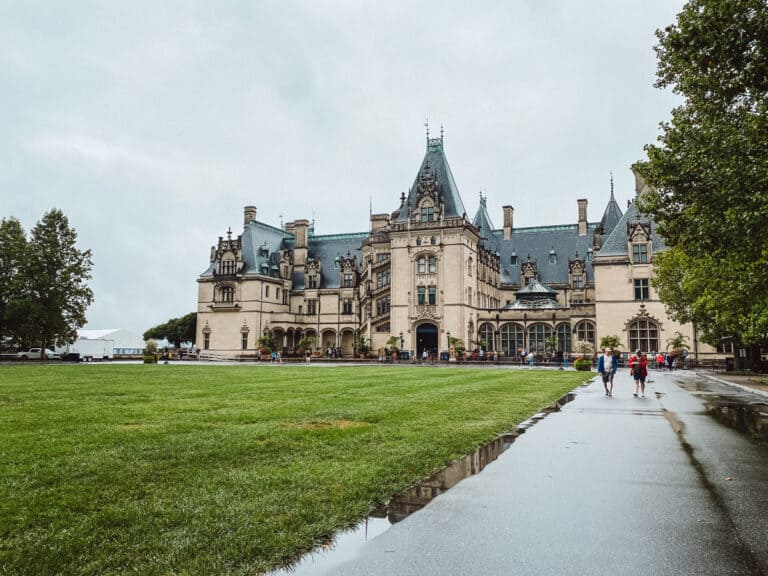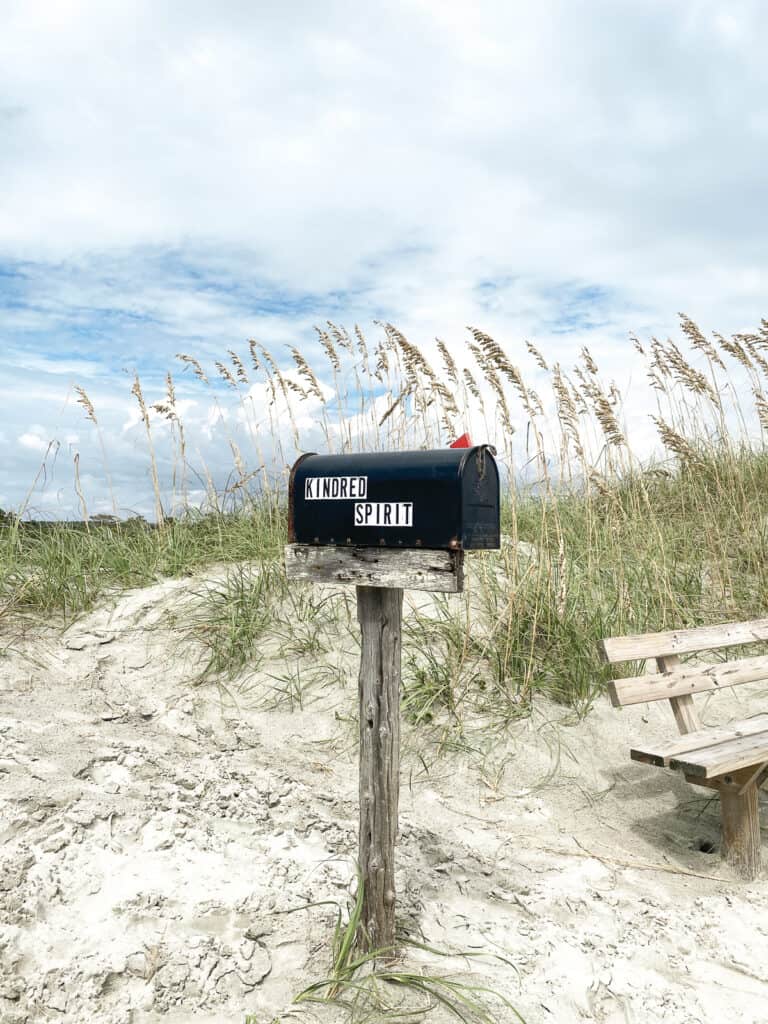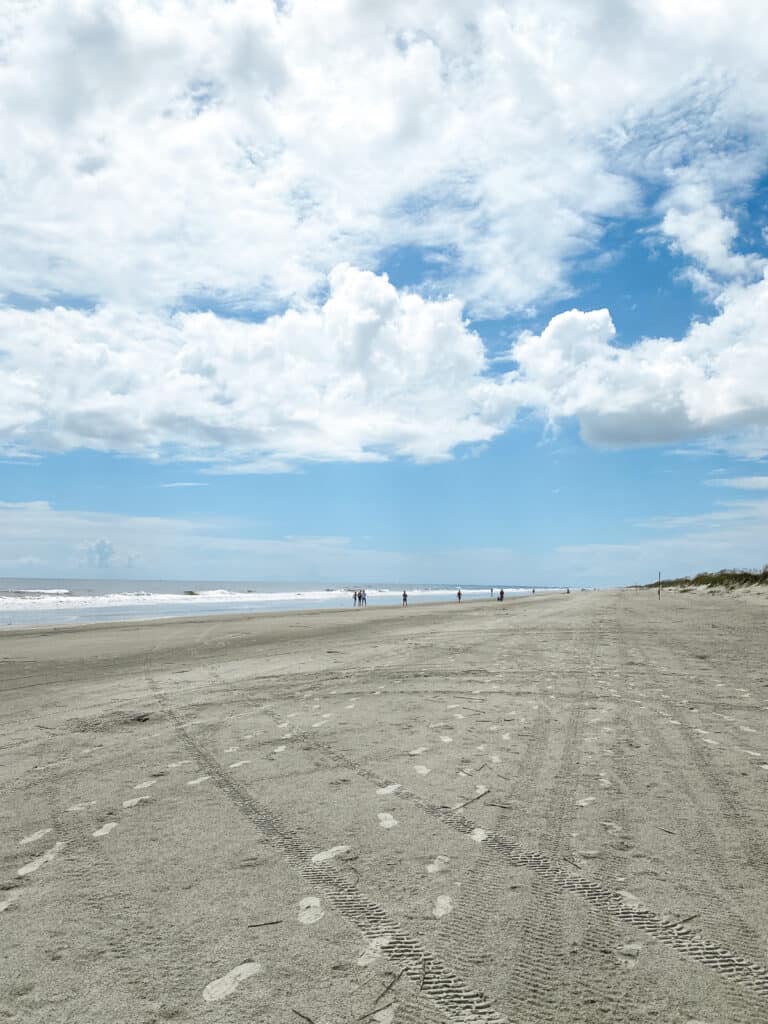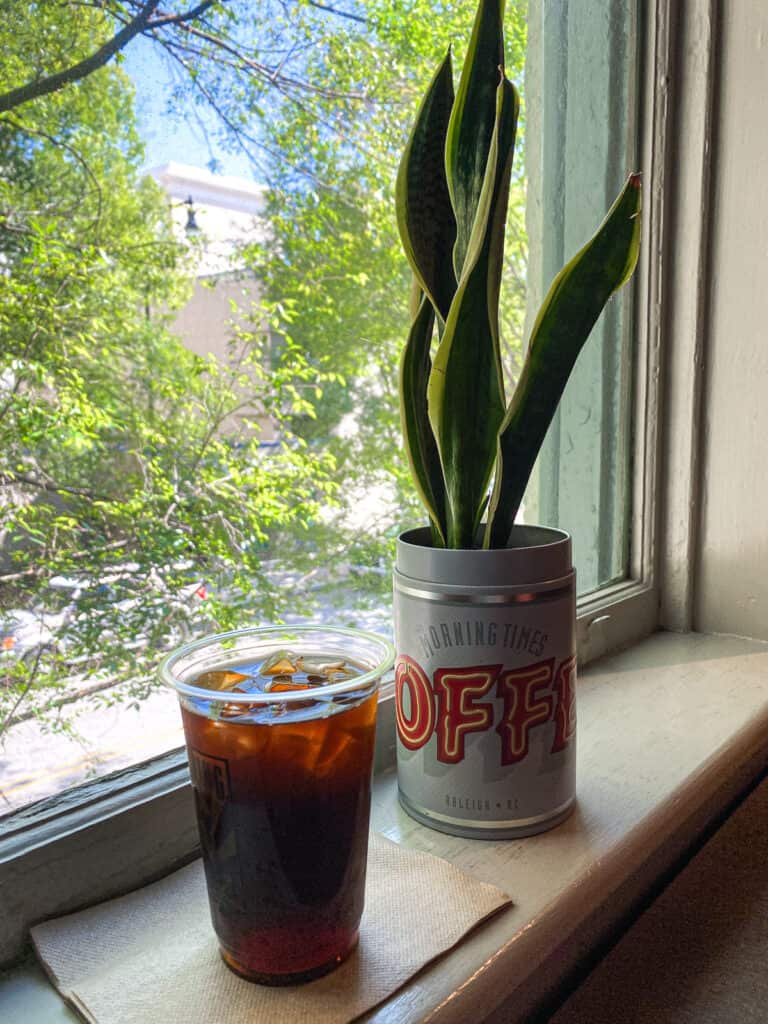Is North Carolina Hot? Everything you need to know
So you’re thinking about visiting North Carolina, or just spending a weekend in Charlotte NC, and you’re worried about picking the best time of year to do as you’ve asked yourself, “Is North Carolina Hot?” We totally understand because we asked ourselves the very same question before moving to Raleigh from Seattle!
After living here throughout the Summer, we can safely say that the answer is yes! North Carolina IS hot. But, there are many reasons to visit and many times of year that are the perfect temperature to plan a visit.
Whether you like lazy days at the beach, adventurous hikes among fall colors, or sitting by a cozy fire in a mountain cabin, this post will help you determine the best time to visit North Carolina for you!
Culture Craving Couple contains affiliate links and is a member of the Amazon Services LLC Associates Program. If you make a purchase using one of these Amazon links, we may receive compensation at no extra cost to you. Thanks for supporting us! You can see our disclosure policy.
Understanding The Climate of North Carolina
Ever thought about packing for a trip and wondered if you should throw in that swimsuit or the cozy sweater? Well, in North Carolina, you might just need both! This state is a bit of a show-off when it comes to weather variety, and here’s why.
The overall vibe and climate of North Carolina’s weather is subtropical and humid. This means that for a significant portion of the year, the state enjoys warm temperatures accompanied by a noticeable moisture level in the air.
Here’s where it gets interesting. Depending on where you are in the state, the weather sort of does its own thing. Hanging out by the coast, like in Wilmington or the Outer Banks? The Atlantic Ocean’s got your back, keeping things a tad cooler and breezier. But if you’re up in the mountains doing some waterfall chasing around Pisgah Forest, say in Asheville, it’s a different story. Those higher spots can get a bit nippy, especially when winter rolls around.
So, whether you’re in the mood for beach vibes or mountain breezes, North Carolina’s got a climate cocktail that’s sure to please. Just remember to pack for some weather surprises along the way!
We’ve been out and about in 95-degree heat when – POOF – out of nowhere it will start TORRENTIAL RAINING. No fun when you have not packed accordingly!
The Best Time to Visit North Carolina
The best time to visit North Carolina is between April and June or from September to November. Why, you ask? Well, during these months, the weather is not too hot, not too cold, but juuust right. It’s basically the Goldilocks of travel times!
In spring, you’ll catch the state in full bloom. And come fall, the mountains put on a show with their vibrant reds, oranges, and yellows, and the colors are just gorgeous.
These periods are also less crowded with fewer tourists so you can explore the state without constantly running into people. Plus, with the mild weather, you can enjoy outdoor activities to your heart’s content, be it hiking, beachcombing, or sipping cocktails on a patio.
And, you don’t have to worry about your hair looking like you stuck your finger in a light socket. LOVE THAT.
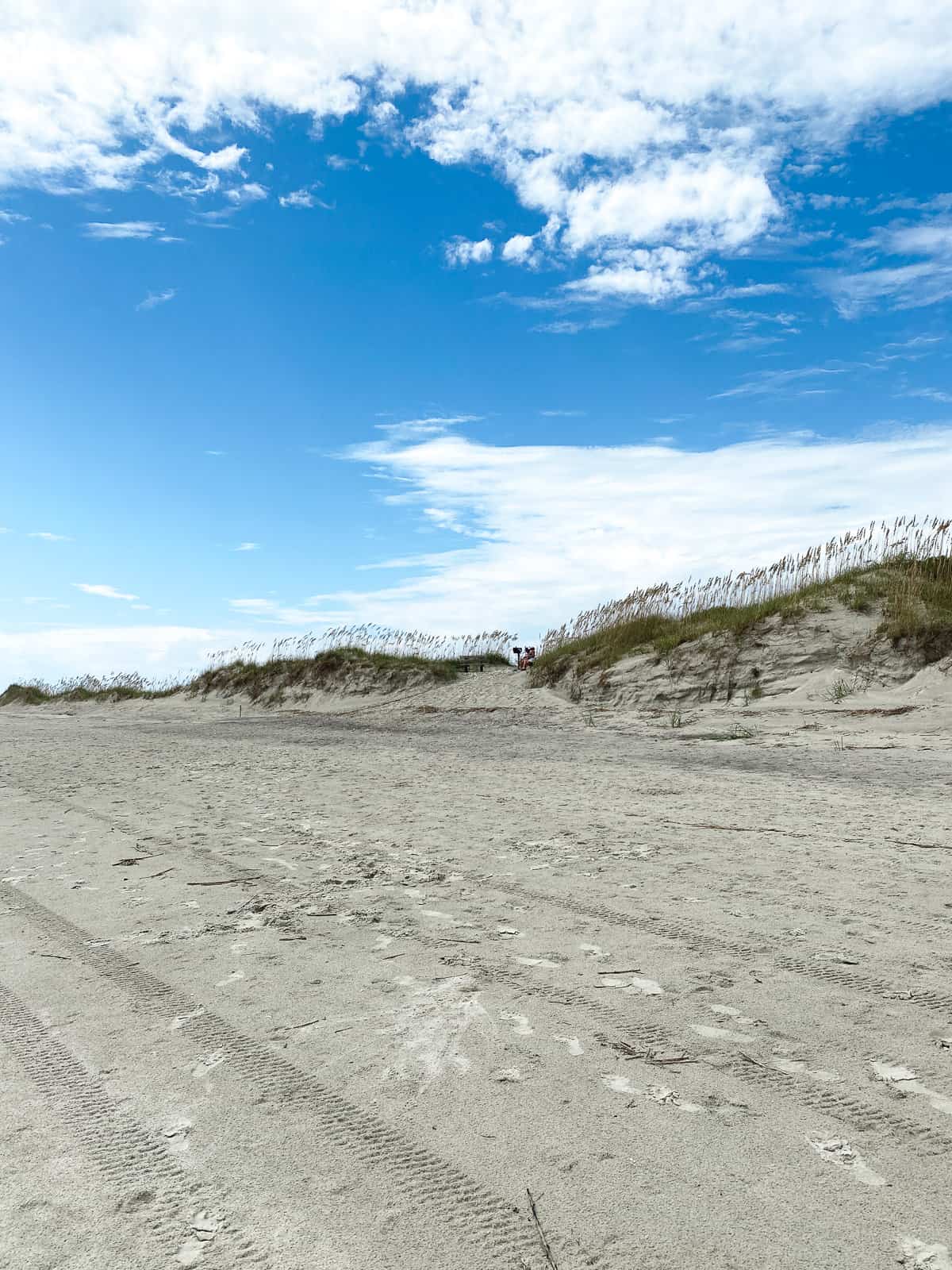
The Worst Time to Visit North Carolina
If you’re not a fan of sweltering heat and sticky humidity, you might want to steer clear of the peak summer months, especially July and August. This is when we moved to Raleigh, NC and we were like WHAT DID WE DO? *melts.* We felt the same way when visited Charlotte for the weekend.
The temperature can soar, and the humidity? Let’s just say you’ll be redefining the term “sweat it out.” It’s the kind of weather where you step outside, and your sunglasses instantly fog up, and your hair poofs.
And while we’re on the topic of summer, let’s not forget about hurricane season. North Carolina can occasionally find itself in the path of these tropical storms, particularly along the coast, which you probably want to avoid.
Lastly, if you’re not a fan of crowds, the major holiday weekends might not be your cup of tea. Think Memorial Day, Fourth of July, and Labor Day. These are times when everyone and their grandma seems to have the same idea to explore North Carolina.
North Carolina Temperature By Month
Let’s do a brief overview of the temperature of North Carolina each month with the highest temperature, lowest temperature, average monthly temperature, and the “feels like” temperature which is probably the most important temperature if we’re being honest!
Here’s an overview of the highest, lowest, and average temperatures for each month followed by some more information:
| Month | Lowest Temperature (°F) | Highest Temperature (°F) | Average Temperature (°F) |
|---|---|---|---|
| January | 32 | 50 | 41 |
| February | 34 | 54 | 44 |
| March | 40 | 60 | 50 |
| April | 48 | 69 | 58.5 |
| May | 56 | 77 | 66.5 |
| June | 64 | 85 | 74.5 |
| July | 69 | 88 | 78.5 |
| August | 68 | 87 | 77.5 |
| September | 62 | 82 | 72 |
| October | 51 | 73 | 62 |
| November | 42 | 63 | 52.5 |
| December | 36 | 55 | 45.5 |
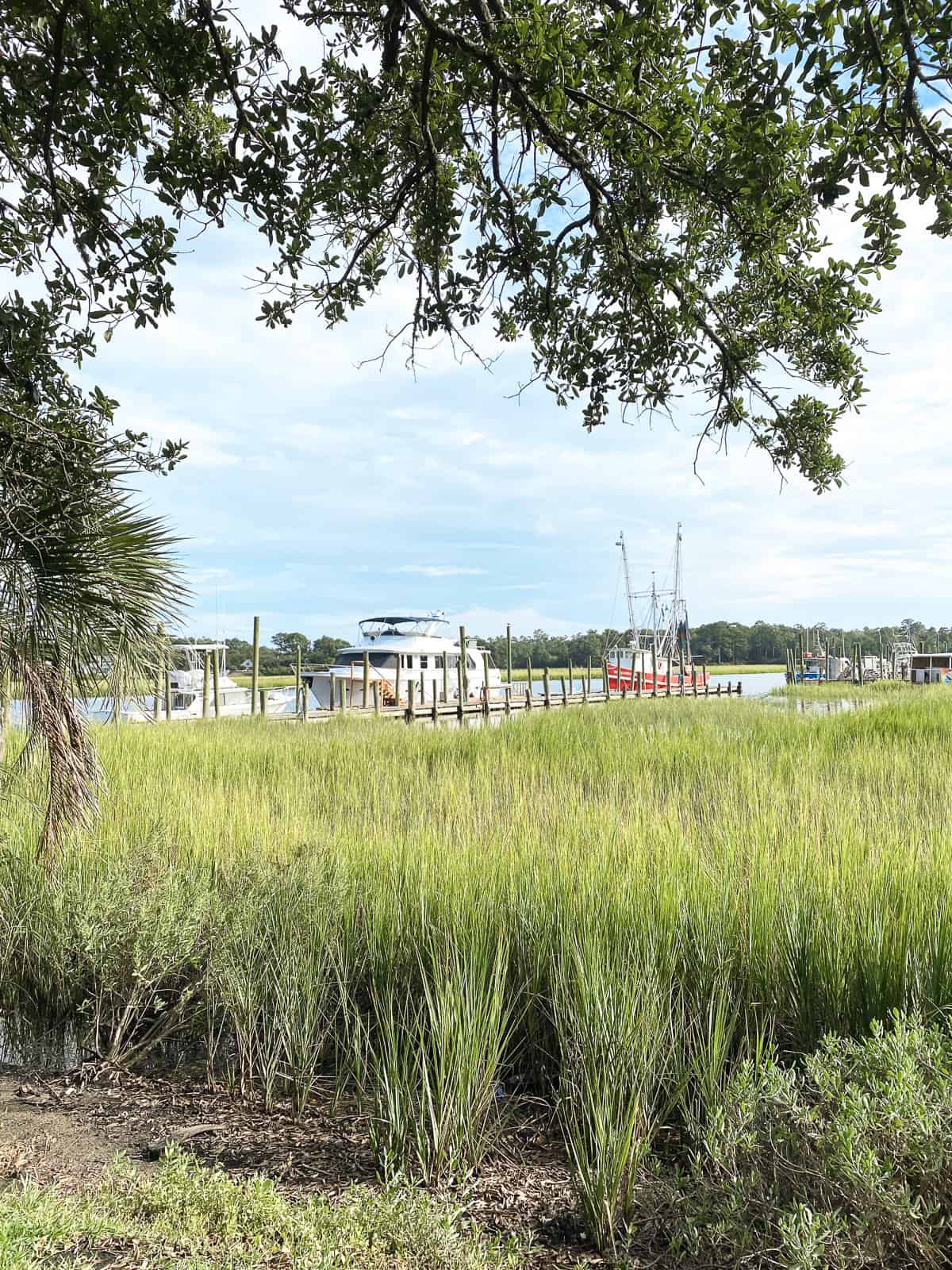
January
The month of January is chilly with occasional sleet and snow. You’ll want to stay holed up in a Raleigh coffee shop if you visit this month.
Lowest Temperature: 32°F (Coastal Plains)
Highest Temperature: 50°F (Coastal Plains)
Average Temperature: 41°F
Feels Like: 37°F
February
The month of February is still cold but with a hint of the upcoming spring!
Lowest Temperature: 34°F (Coastal Plains)
Highest Temperature: 54°F (Coastal Plains)
Average Temperature: 44°F
Feels Like: 40°F
March
The month of March is a breath of fresh spring air with minimal chances of snowfall! Yesss!
Lowest Temperature: 40°F (Coastal Plains)
Highest Temperature: 60°F (Coastal Plains)
Average Temperature: 50°F
Feels Like: 48°F
April
The month of April means that Spring is in full swing, with flowers blooming and warmer days!
Lowest Temperature: 48°F (Coastal Plains)
Highest Temperature: 69°F (Coastal Plains)
Average Temperature: 58.5°F
Feels Like: 57°F
May
The month of May brings the onset of summer, with beach days becoming more frequent.
Lowest Temperature: 56°F (Coastal Plains)
Highest Temperature: 77°F (Coastal Plains)
Average Temperature: 66.5°F
Feels Like: 65°F
June
The month of June brings true summer vibes, with longer days and humid conditions (hellooo poofy hair!)
Lowest Temperature: 64°F (Coastal Plains)
Highest Temperature: 85°F (Coastal Plains)
Average Temperature: 74.5°F
Feels Like: 76°F
July
The month of July is the peak of summer with high humidity and occasional thunderstorms. When they come, it’s HEAVY. But, they never last long!
Lowest Temperature: 69°F (Coastal Plains)
Highest Temperature: 88°F (Coastal Plains)
Average Temperature: 78.5°F
Feels Like: 81°F
August
The month of August is honestly the same as July but with slightly fewer thunderstorms. It’s hothothot!
Lowest Temperature: 68°F (Coastal Plains)
Highest Temperature: 87°F (Coastal Plains)
Average Temperature: 77.5°F
Feels Like: 80°F
Sept
September is a great month and it brings a mix of summer warmth and autumn coolness which is very welcome after the Summer heat! It also makes it a great time to visit the beaches of North Carolina, like Sunset Beach because it’s warm but not busy!
Lowest Temperature: 62°F (Coastal Plains)
Highest Temperature: 82°F (Coastal Plains)
Average Temperature: 72°F
Feels Like: 70°F
October
The month of October is my favorite because the weather cools down and all the pretty fall colors come out to play!
Lowest Temperature: 51°F (Coastal Plains)
Highest Temperature: 73°F (Coastal Plains)
Average Temperature: 62°F
Feels Like: 60°F
November
In November, the chill of winter starts to set in, signaling the end of beach season.
Lowest Temperature: 42°F (Coastal Plains)
Highest Temperature: 63°F (Coastal Plains)
Average Temperature: 52.5°F
Feels Like: 50°F
December
December is the heart of winter, with chilly days and colder nights, perfect for cozying up by the fireplace.
Lowest Temperature: 36°F (Coastal Plains)
Highest Temperature: 55°F (Coastal Plains)
Average Temperature: 45.5°F
Feels Like: 42°F
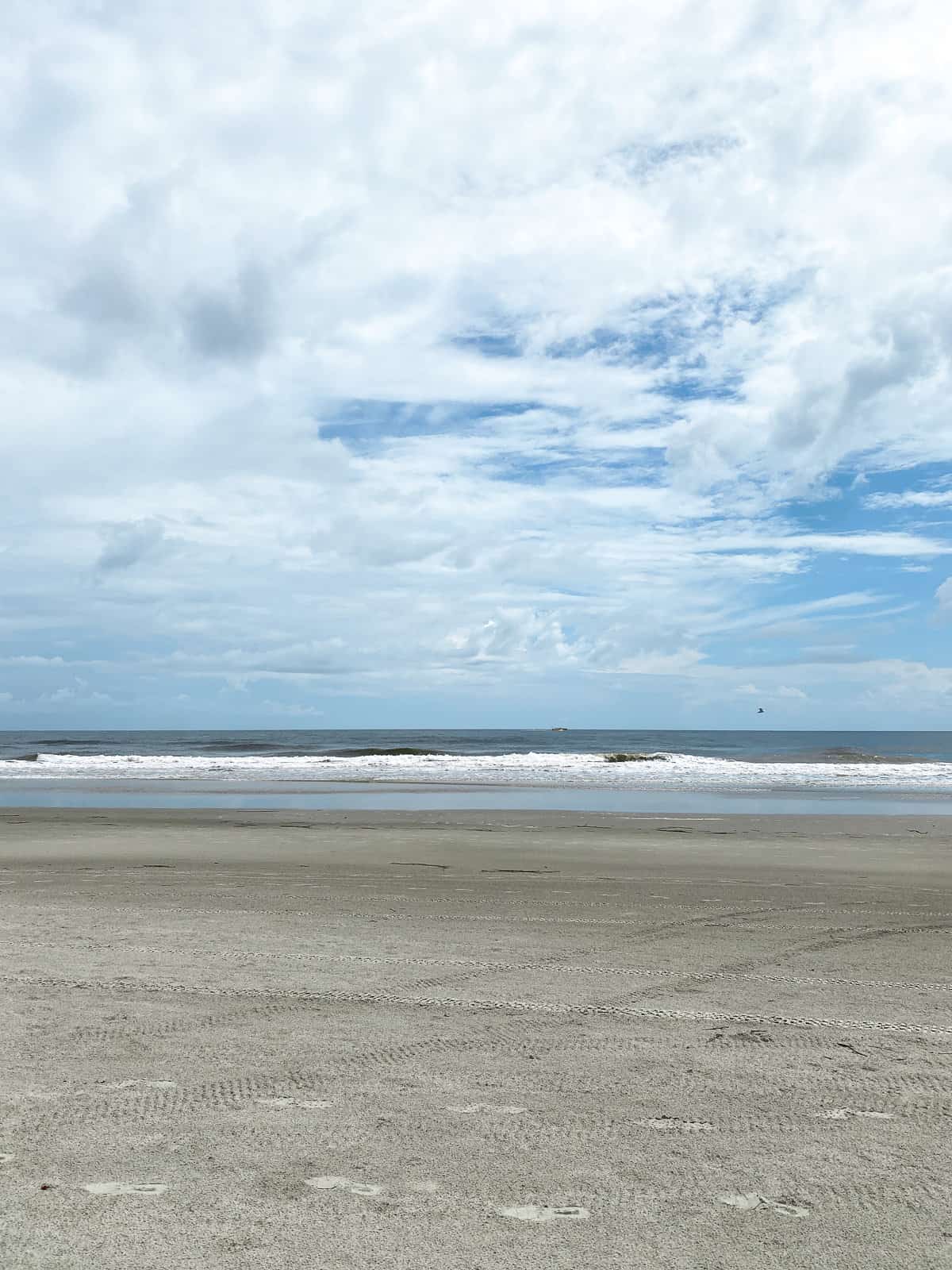
Seasonal Conditions
Winter
Average Temperature: 43°F
Winter in North Carolina is a time of chilly breezes and frosty mornings. While the coastal plains experience milder temperatures, the mountainous regions can see some snowfall.
It’s a season of hot cocoa, cozy blankets, and the occasional snowman, especially in the higher elevations. The days are shorter, and there’s a crispness in the air that makes you want to bundle up.
Spring
Average Temperature: 59.5°F
Spring is a breath of fresh air in North Carolina. As the state shakes off the winter chill, flowers begin to bloom, and the days grow longer.
The temperatures are comfortably warm, making it a perfect time for outdoor activities. Whether it’s a stroll in the park or a hike in the mountains, the beauty of spring is evident in every corner of the state.
Summer
Average Temperature: 80.5°F
Ah, summer! This is when North Carolina truly heats up. The days are long, sunny, and, yes, very very humid. Beaches become the go-to spots, and there’s a buzz of activities everywhere.
While the coastal areas bask in the sun, the mountains offer a cooler retreat. It’s a season of barbecues, pool parties, and enjoying the vibrant summer nights.
Fall
Average Temperature: 72°F
Fall is a spectacle in North Carolina. The state dresses up in hues of red, orange, and yellow, with the foliage putting on a show, especially in the mountain regions such as the Blue Ridge Parkway. The temperatures start to drop, bringing in cooler days and even cooler nights.
It’s the perfect time for apple picking, pumpkin patches, or a road trip to enjoy the scenic beauty that North Carolina offers. Make sure you bring your fun questions for couples on a road trip!

FAQ
How Humid Is North Carolina?
North Carolina, with its subtropical climate, often feels humid, especially in summer. Coastal regions, influenced by the Atlantic, are typically more humid, while the mountains are a bit drier. Expect peak humidity from June to August.
Is North Carolina Hot In the Summer?
Yes, North Carolina summers are hot. With its subtropical climate, temperatures often soar, especially in the Coastal Plains and Piedmont regions. Expect hot and humid days, particularly from June to August, where temperatures can get up to 95-100°F.
Does It Snow In North Carolina?
Yes, North Carolina does see snow, especially in its mountainous regions! While the coastal areas receive minimal snowfall, places like the Appalachian Mountains can experience significant snow during winter months.
What Are The Hottest Cities in North Carolina?
The hottest cities in North Carolina are typically found in the Coastal Plains and Piedmont regions. Cities like Fayetteville, Charlotte, and Raleigh often experience higher temperatures, especially during the peak summer months.
Is it Safe To Travel to North Carolina?
From a weather perspective, North Carolina is generally safe for travel. However, it’s essential to be aware of seasonal conditions, such as hurricane season along the coast or potential snow in the mountains. Always check local weather forecasts and advisories before planning your trip.
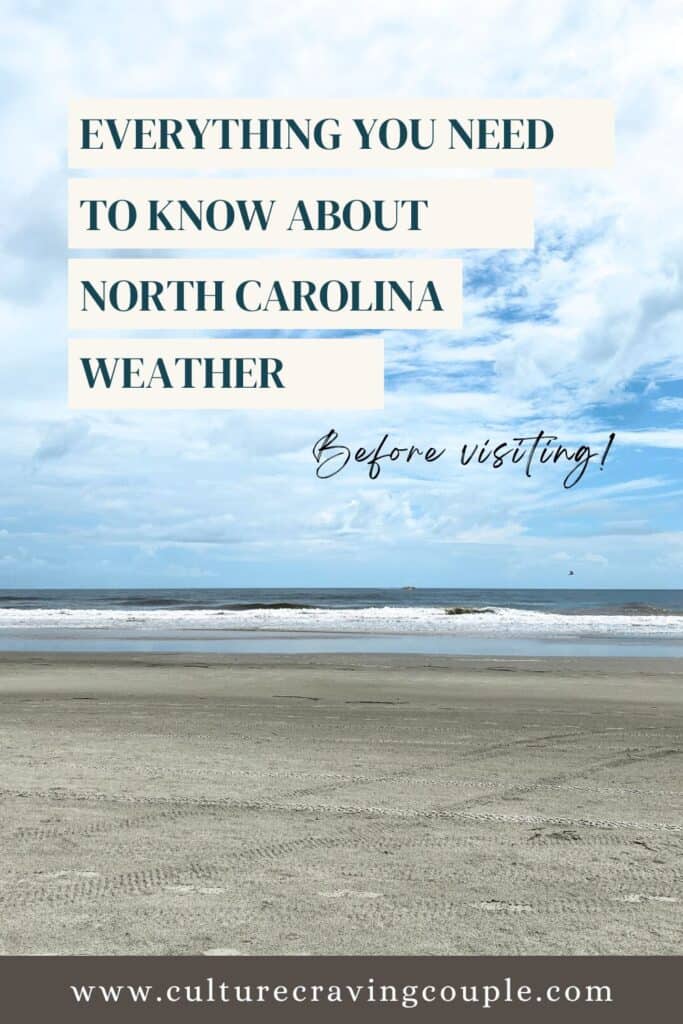
Wrap-Up: Is North Carolina Hot?
So, is North Carolina hot? Absolutely – especially in the summer. But it’s also a state of diverse climates, from the humid beaches of the Coastal Plains to the snowy peaks of the Appalachian Mountains.
Whether you’re seeking a sun-soaked vacation or a winter wonderland, North Carolina offers a bit of everything. Remember, every season has its charm here, so pack accordingly and embrace the beauty of this diverse state.
So, what season do you plan to come visit this beautiful state?



